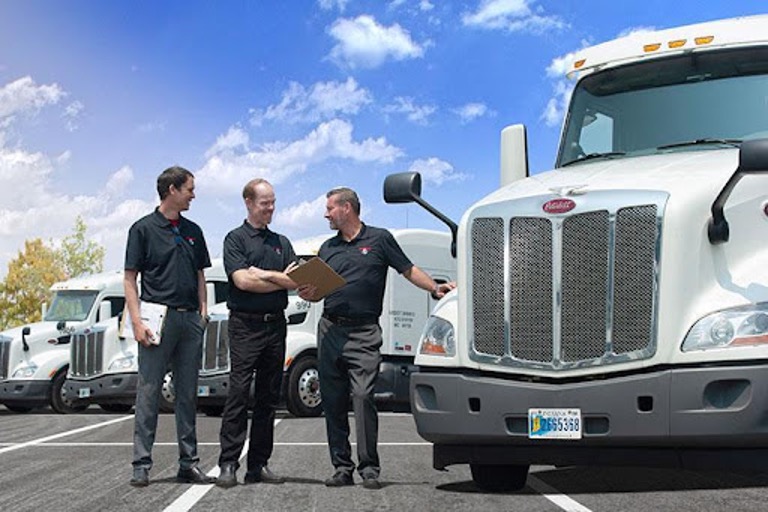In the fast-paced world of trucking, managing cash flow is often a critical factor in a freight company’s success. It can mean the difference between seamless operations and costly disruptions. The trucking industry faces unique financial challenges, including the unpredictability of payment cycles and the need to cover operational costs promptly. When it comes to addressing these challenges, trucking companies have two primary options: factoring and lines of credit.
Cash flow management is at the heart of every successful trucking business. It’s not just about ensuring that there’s enough money to keep the wheels turning; it’s also about fueling growth, seizing new opportunities, and maintaining a competitive edge. In this article, we’ll delve into the world of cash flow management in the trucking industry and explore two powerful tools that can help trucking companies stay in the driver’s seat: factoring and lines of credit.

Understanding Cash Flow Management:
With profit margins often razor-thin, having ready access to working capital can be the key to survival. It’s not just a matter of convenience; it’s a fundamental driver of success. To illustrate this point, let’s explore two distinct approaches to cash flow management: factoring and lines of credit. These financial tools play a pivotal role in helping trucking companies tackle cash flow challenges head-on, and each comes with its unique advantages and considerations.
Factoring as a Cash Flow Solution:

Efficient cash flow management is the lifeblood of any trucking company. It goes beyond balancing the books; it’s about maintaining liquidity, ensuring timely payments to drivers and vendors, and having the financial flexibility to handle unexpected expenses or invest in expansion.
Freight factoring is a financial strategy that has gained significant popularity in the trucking industry. It offers trucking companies the ability to convert their outstanding invoices into immediate cash. Here’s how it works: when a trucking company delivers a load, it generates an invoice for payment from the client, which can sometimes have net-30, net-60, or even longer terms. Instead of waiting for these payments, factoring companies step in to provide an advance, typically around 90% of the invoice’s value, within hours or days of invoicing. This quick infusion of cash allows trucking companies to cover immediate expenses, from fuel and maintenance to payroll, without the cash flow constraints of waiting for clients to settle their invoices.
The benefits of factoring go beyond simply accelerating cash flow. It allows trucking companies to maintain predictable and steady cash flow, which is vital for keeping operations running smoothly. It eliminates the uncertainty associated with delayed payments and provides the financial foundation for growth and sustainability. Many successful trucking companies have turned to factoring as their preferred cash flow solution, as it not only improves liquidity but also minimizes the risk of late or non-payment from clients.
Lines of Credit as an Alternative:
While factoring is a powerful tool for cash flow management, another option for trucking companies is establishing a business line of credit. A business line of credit is a financial arrangement with a bank or financial institution that provides a predetermined credit limit, which the business can draw upon as needed. It operates similarly to a credit card but with potentially higher credit limits. Trucking companies can use a line of credit to cover various expenses, from routine operational costs to unexpected emergencies.
One key advantage of a line of credit is flexibility. Trucking companies can use it on an as-needed basis, allowing them to manage their cash flow while keeping interest costs down. Lines of credit are often useful for handling ongoing expenses, such as regular maintenance, payroll, and fuel costs. However, lines of credit may have limitations regarding the total amount of credit available and the speed at which it can be accessed, making them less suitable for scenarios where immediate cash flow is critical, such as covering expenses before client payments arrive.
Comparing Factoring and Lines of Credit:
Now that we’ve explored both factoring and lines of credit individually, let’s directly compare these two essential tools in cash flow management. Trucking companies often find themselves facing the decision of which option best suits their specific needs, and understanding the differences is crucial.
Accessibility: Factoring offers rapid access to cash. Trucking companies can receive advances on invoices within hours or days, ensuring they have immediate funds to cover expenses. Lines of credit, on the other hand, may require an application process and approval from a financial institution. The initial setup of a line of credit can take longer, and there’s no guarantee of approval.
Cost: Factoring typically comes with a fee, which is a percentage of the invoice amount. While this fee can reduce profit margins slightly, it is often outweighed by the advantages of steady cash flow and lower administrative burdens. Lines of credit involve interest charges on the amount borrowed, which can accumulate over time. The overall cost of a line of credit depends on the interest rate and how long the funds are borrowed.
Flexibility: Factoring is especially suitable for situations where immediate cash flow is critical, such as covering expenses before client payments are received. It offers a predictable and reliable source of working capital. Lines of credit, on the other hand, provide flexibility for ongoing operational expenses but may not be the ideal choice when rapid access to funds is essential.
Making the Right Choice for Your Trucking Business:
Selecting the appropriate cash flow management tool for your trucking business is a decision that requires careful consideration. The right choice will depend on your specific needs, business size, payment cycles, and the importance of immediate access to funds.
When considering factoring, it’s crucial to look for a reputable factoring company that understands the unique challenges of the trucking industry. Factoring companies, like HMD Trucking, can be valuable partners in ensuring a smooth cash flow.
For lines of credit, trucking companies need to assess their creditworthiness and their ability to manage interest costs effectively. They should also evaluate the time it takes to set up a line of credit, as it may not be the best solution for immediate cash flow needs.
Conclusion:
In conclusion, managing cash flow effectively is a fundamental component of success in the trucking industry. Whether you choose factoring or a line of credit, making an informed decision can help your trucking business thrive and navigate the financial challenges that often come with the territory.




